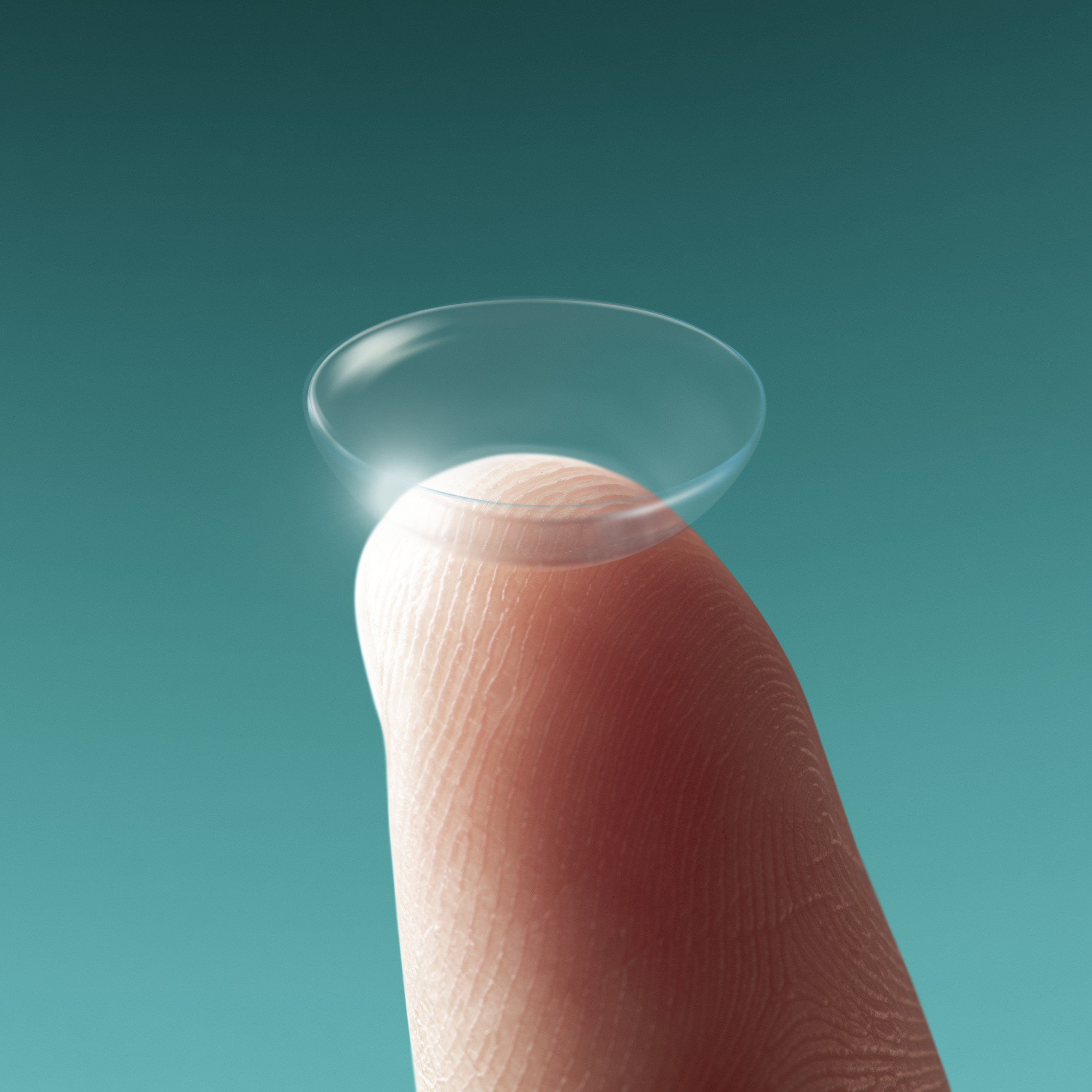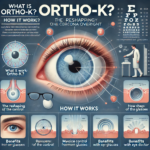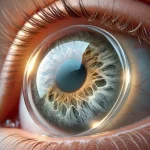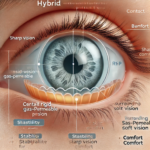Scleral Contact Lenses Specialists in Dubai
Dr. Rahul Raghav’s practice is a leading option for Scleral Contact Lenses specialists in Dubai. The practice offers expert care in the fitting and prescription of scleral contact lenses, which is greatly beneficial for people with irregular corneas, keratoconus, dry eye syndrome, or other disorders of the cornea.
Scleral lenses are custom-made devices designed to vault over the cornea onto the sclera-the white part of the eye-to provide enhanced comfort and clarity of vision. They are ideal for individuals who cannot derive comfort or any form of vision correction from traditional lenses.
Because fitting scleral lenses requires a very precise eye exam for each unique eye shape and condition, experienced optometrists at Dr. Raghav’s practice ensure that all patients receive comprehensive eye exams before the fitting of scleral lenses. The goal is to help someone see clearly and comfortably for extended periods.
What Are Scleral Contact Lenses?
Scleral lenses are large-diameter gas-permeable lenses. They are designed to vault over the cornea and rest on the sclera-the white part of the eye. Unlike traditional contact lenses that site directly on the cornea, scleral lenses leave a space between the lens and the cornea, which is filled with a preservative-free saline solution. This design enables more comfort and acuity, especially in those individuals having irregular corneas, for example, those with keratoconus or severe dry eye syndrome.
Scleral lenses have become increasingly popular as they tend to provide improved vision for the patients who are uncomfortable while wearing regular contact lenses. They are often the first point of contact for people with conditions such as:
Keratoconus: This is a progressive eye disease whereby the cornea thins and bulges into a cone-like shape, distorting vision. Corneal Ectasia: This is after refractive surgery, such as LASIK, wherein the cornea becomes unstable. Severe Dry Eye Syndrome: When the eye does not produce enough tears, leading to irritation and discomfort. Corneal Scarring or Irregularities: Caused by injury or surgery, these lead to vision impairment. Drawbacks of Scleral Contact Lenses
Even with the benefits of scleral lenses, there is a flip side that a patient needs to be aware of:
Cost: These lenses are somewhat costlier compared to regular contact lenses. Due to their customized nature and the specialized fitting required to fit appropriately, the price tags these lenses come with are usually higher than the others.
Fitting Time: It surely takes more time to fit the scleral lenses, as compared to the standard ones. Many visits may be required by the optometrist in order to achieve a perfect fit. This can be rather time-consuming. Lens Care: Scleral lenses require proper care. They have to be cleaned and stored with special solutions; the method of application also has to fill up the lens with saline before placing them onto the eye. This is quite more cumbersome compared to soft lenses.
Learning Curve of Insertion and Removal: The handling of a scleral lens can be somewhat difficult for new users to get accustomed to. These lenses take some time and practice to be inserted and removed correctly. Because the size of these lenses is larger, it may take some time to get comfortable with their insertion.
Larger in Size: Scleral lenses are larger in size as compared to the usual gas permeable or soft contact lenses. Due to their size, some people may feel uncomfortable, though this usually is temporary and is especially noticed during the initial few days. However, people generally get used to them over a certain period of time.
Decreased Corneal Oxygenation: Even though scleral contact lenses allow for oxygen to pass through them, the pool of liquid created between the lens and the eye decreases the amount of oxygen that reaches the cornea. So, only the length of wear prescribed by an optometrist should be used in order to prevent complications.
Scleral Contact Lenses vs Conventional Contact Lenses
Scleral lenses differ from traditional contact lenses-both soft and rigid gas permeable lenses-in a number of ways. For this reason, they are better suited to certain types of vision correction. Size and Fit: Scleral Lenses: These lenses are larger in size and rest on the sclera, completely vaulting the cornea. Traditional Contact Lenses: The fitting of soft and gas permeable lenses directly onto the cornea is significantly smaller in diameter when compared to scleral lenses.
Comfort:
Scleral Lenses: These lenses provide comfort mainly because they do not touch the sensitive surface of the cornea, especially in cases where there is some sort of corneal irregularity present.
Traditional Contact Lenses: They are used on the cornea and sometimes irritate it; hence, these are less comfortable for people who have problems with dry eyes or any other type of problem with the cornea.
Vision Correction:
Scleral Lenses: They certainly work better in a person who has an irregularly-shaped cornea since there is a smooth optical surface that enhances one’s vision quality.
Traditional Contact Lenses: These are suitable for patients with a normally-shaped cornea since they easily correct common refractive errors such as myopia, hyperopia, and astigmatism.
Hydration:
Scleral Lenses: The fluid reservoir between the lens and cornea keeps the eye hydrated all day. This comes as great relief to people suffering from extreme dry eye syndrome.
Traditional Contact Lenses: The soft lenses tend to retain water; due to this, they may become dry throughout the day, especially when exposed to arid conditions or after extended wear.
Durability:
Scleral Lenses: Scleral lenses are manufactured using rigid materials; therefore, they are robust and less likely to get damaged.
Traditional Contact Lenses: Soft lenses are very comfortable to wear but may tear easier and often need to be replaced.
Contact Solution for Scleral Lenses
Scleral lenses are one special kind of contact lens; for comfort and effectiveness, they require special care solutions. Several types of solutions are generally used to clean, disinfect, and store them. Here are the main types of solution used with scleral lenses:
Preservative-free saline is the solution that fills the lens before its placement onto the eye. It forms a cushioning layer between the lens and cornea, thus it may help in comfort and hydration. Preservative-free saline is needed to avoid irritation.
Hydrogen peroxide-based solutions are normally recommended for cleaning and disinfecting scleral lenses. They clear off all debris and bacteria without preservatives that might cause irritation to some users.
Multipurpose Solution: Some patients use the multipurpose solution to clean and store their lenses. However, hydrogen peroxide-based systems are generally superior for scleral lenses.
Enzymatic Cleaners: These may be used periodically, to digest protein deposits on the surface of the lens, maintaining clarity and comfort over time.
How to Insert Scleral Contact Lenses?
Putting in scleral contact lenses requires a bit more preparation, compared to soft lenses.
Clean Hands: Clean your hands with soap and water, then dry them using a towel free of lint in order to avoid transferring the debris on the lenses.
Prepare the Lens: Remove the lens from the case and check the lens for any possible damage or deposits. Then, fill the bowl of the lens with preservative-free saline. This step is important because the saline creates the protective layer between the lens and cornea.
Use an eyecup or Finger: Place the lens on a suction eyecup or balance on the tip of your finger. Bend your head forward and look down toward a mirror.
Open Your Eye: With one hand, pull your upper lid over your eye, and with the other pull your lower lid down.
Place the Lens: Gently set the lens directly on your eye. Make sure of proper centration before letting go of the eyelids slowly. If placed properly, the lens must not irritate the eye, and there should not be any air bubbles trapped underneath it.
Check Fit: After a few blinks, check that the lens is centered and that you feel comfortable. If you experience discomfort or see some air bubbles, remove the lens, refill it with saline, and reinstall it.
Scleral lenses have become revolutionary in the field of vision correction for individuals with an irregular cornea and severe conditions of dry eye syndrome. Considering they require a bit more manipulation than the average lenses and will take some time to get used to, their advantages certainly make them well worth the trouble for patients who, without them, could not see with a regular lens. If properly looked after and taught by a specialist, scleral lenses bring unparalleled clarity and comfort.





